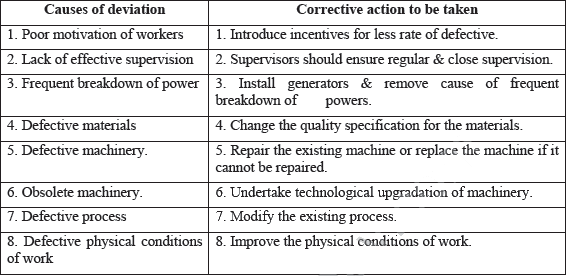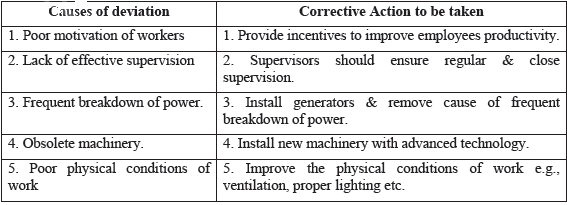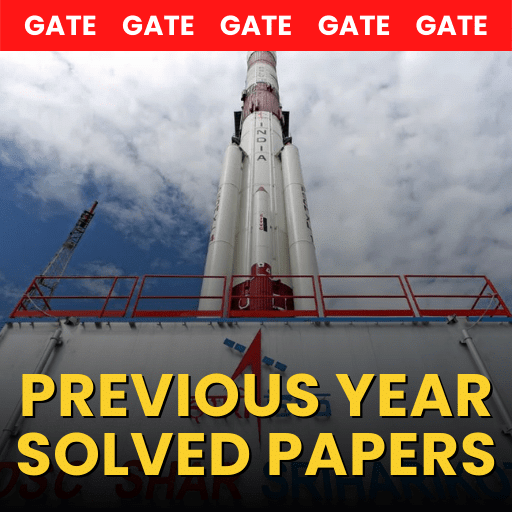Long Answer Questions: Controlling | Business Studies (BST) Class 12 - Commerce PDF Download
Q1: Explain ‘Budgetary control’ as a technique of managerial controlling.
Ans: Budgetary control is a technique of managerial control under which different operations of an organisation are planned in advance in the form of budgets viz sales budget, cash budget, material budget, production budget etc. These budgets act as standards for comparing with the actual performance and taking necessary corrective action if need be, for attaining organizational goals
Advantages of budgetary control :
(i) Helps in attaining targets — It helps in attaining organisational objectives by focusing on specific and time bound targets.
(ii) Optimum utilization of resources — It ensures the optimum utilisation of resources by allocating them among different departments according to their requirement.
(iii) Helps in coordination — It helps in achieving co-ordination among different departments.
(iv) Facilitates the management by exception — By stressing on the operations which deviate from the budgeted standards it helps the management to control by exceptions. However, the effectiveness of budgeting depends on how accurately estimates have been made about future.
Q2: Y Ltd. Produces safety pins on a mass scale. The co.’s policy is that at the most 2% of the daily production could be defective over a three months period it has been observed that 8-10% of the production is defective. Identify the managerial function required to correct the above situation. Briefly explain the procedure to be followed for the purpose.
Ans: Here the actual deviations are more than planned acceptable deviations, so the management need to take corrective action to rectify the problems. The function of comparing actual performance with planned performance and taking corrective action is called ‘controlling’—
The steps involved in the process of controlling are —
(i) Setting Performance Standard.
(ii) Measurement of Actual Performance.
(iii) Comparing Actual Performance with Standards.
(iv) Analysing Deviations.
(v) Taking Corrective Action and re setting the performance standard.
Q3: Y Ltd. Produces safety pins on a mass scale. The company’s policy is that at the most 2% of the daily production could be defective. Over a three months period, it has been observed that 8-10% of the production is defective.
Identify the management function required to correct the above situation.
Briefly state the procedure to be followed for the purpose.
Ans: The management function required to correct the above situation is known as ‘controlling’.
Procedure to be followed for improving the quality of production :
- Find out the causes of deviations.
- Take appropriate corrective actions.

Q4: X Ltd. is engaged in manufacturing machine components. The target production is 200 units per day. The company had been successfully attaining this target until two months ago. Over the last two months, it has been observed that daily production varies b/w 150 & 170 units.
Identify the management function to rectify the above situation. Briefly state the procedure to be followed so that the actual production may come up to the target production.
Ans: ‘Controlling’ is the management function to rectify the above situation.
Procedure to be followed to increase the level of production
(i) Find out the causes of deviation
(ii) Take appropriate corrective action.
Q5: “Control does not require any process”. Comment.
Ans: The given statement—“Control does not require any process”. Process of management control involves the following steps.
(i) Setting performance standards : Standards are targets against which actual performance can be measured and deviations can be found.
(ii) Measurement of actual performance : This step involves actual performance of various individuals and groups for comparing it with the standards.
(iii) Comparing actual performance with standards : After measuring the performance, the next step is to compare actual performance with the standard performance.
(iv) Analysing deviation : Control technique should focus on the key result areas only which are critical to the success of an organization.
(v) Taking corrective measures : No corrective action is required when the deviations are within the acceptable limits.
Q6: Explain to a newly appointed foreman, under whose supervision school bags are being made, how he has to carry out process of control ?
Ans: The foreman should take following steps :
(i) Setting performance standards : Standards are targets against which actual performance can be measured and deviations can be found.
(ii) Measurement of actual performance : This step involves measuring actual performance of various individuals and groups for comparing it with the standards. There are several techniques for measurement of performance personal observation, sample checking, performance reports etc.
(iii) Comparing actual performance with standards : After measuring the performance, the next step is to compare actual performance with standard performance. Such comparison will reveal the deviation between actual and desired results.
(iv) Analysing deviations : If the deviations are within reasonable limits they may be ignored. Only significant deviations from the standards should be reported to the management.
(v) Taking corrective actions : No corrective action is required when the deviations are within the acceptable limits.
Q7: “An ideal control technique is one that checks every bit of performance”. Comment.
Ans: The given statement- “An ideal control technique is one that checks every bit of performance is wrong. An ideal control technique should focus on the key areas.
(i) Critical point control : There are several activities’ to be controlled. In practice, it is not possible for management to control each and every activity due to limited time.
(ii) Control by exception/management by exception : An attempt to control everything may end up by controlling nothing.
(iii) Advantages of critical point control and Management by exception : It identifies the critical problems which need timely action. The routine problems are left to the subordinate. It saves time and efforts of managers.
(iv) “Feedback” in controlling : Without the availability of feedback no action can be taken by the managers. Manager have to review the standards improve the quality of materials.
(v) “Deviation” in controlling : Deviation means the difference between actual performance and standard performance. Once the nature and magnitude to deviations are ascertained, the causes of deviations should be identified.
Q8: There are two managers Rahim and Pankaj. Rahim is saying that controlling is forward looking where as according to Pankaj controlling is looking back Who correct ? Explain why ?
Ans: Both Rahim & Pankaj are partially correct. Controlling is bath backward looking as well as forward looking.
(i) Controlling is blind with out planning if the standards are not set in advance, managers have nothing to control.
(ii) Planning with out controlling in meaningless because once a plan becomes operational, controlling is necessary to monitor the progress Planning is looking ahead while controlling is looking back.
(iii) Plans are prepared for future to achieve the organizational goals. Planning is deciding in the present what to do in the future. Planning involves looking ahead and is called forward looking function.
(iv) Controlling is the process through which managers ensure that actual performance in according to planned standards. Controlling is finding out deviations from past. In this manner controlling is a backward looking function.
Q9: If planning is done carefully and accordingly other functions of management are going in the right direction, then there is no need of the controlling functions of management’. Do you agree with the statement. Give reasons in support of your answer ?
Ans: No, I don’t agree with the given statement. Controlling is an indispensable function of Management Importance of Controlling.
(i) Controlling helps in achieving organizational goals Management is setting organizational goals and establishing a procedure to achieve them performance may or may not necessarily according to plans.
(ii) Controlling helps in judging accuracy of standards An efficient control system enables management to verify whether the standards set are accurate.
(iii) Controlling helps in making efficient use of resources : By exercising, a manager seeks to reduce wastage and spoilage of resources. This ensures effective and efficient utilization of resources.
(iv) Helps in motivating employees Good control system ensures to decide in advance what to do and how to do and on the basis of this their performance is evaluated.
(v) Facilitates Coordination Coordination provides direction to all activities and efforts for achieving goals.
(vi) Ensures order and discipline Controlling creates an atmosphere of order and discipline in the organization Helps to minimize dishonesty.
|
50 videos|195 docs|49 tests
|
FAQs on Long Answer Questions: Controlling - Business Studies (BST) Class 12 - Commerce
| 1. What is commerce? |  |
| 2. How does commerce contribute to economic growth? |  |
| 3. What are the different types of commerce? |  |
| 4. How does e-commerce impact traditional commerce? |  |
| 5. What are the key challenges faced by commerce in the digital age? |  |
























